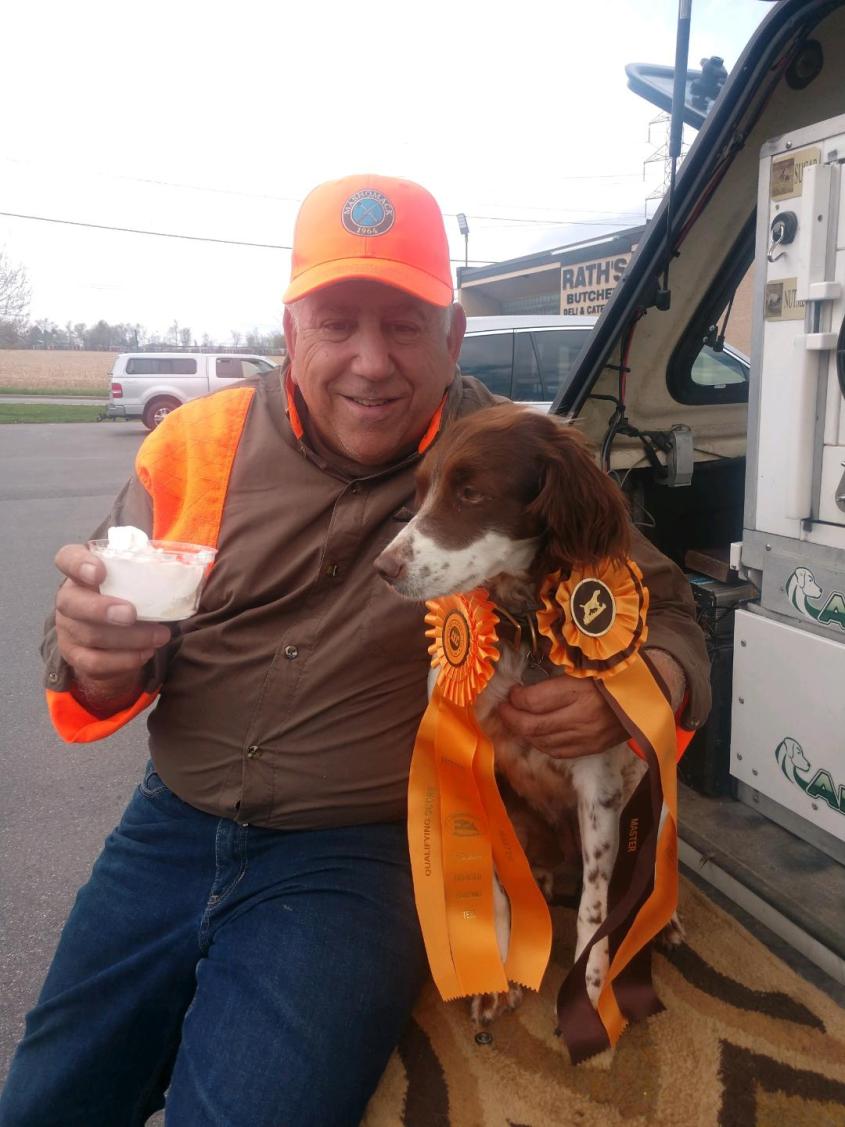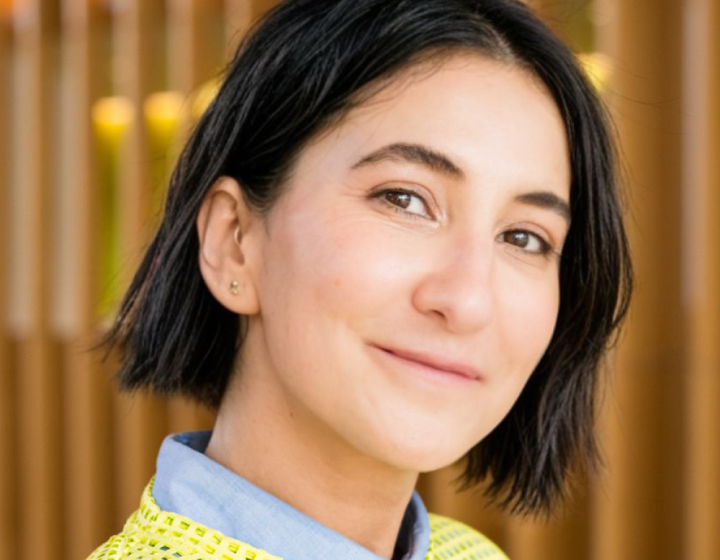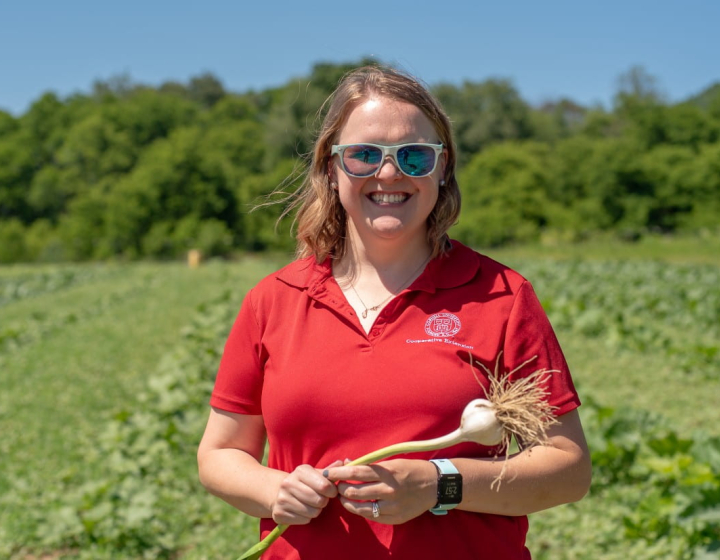Score’s out: Through three cancer scares, grateful family donates to Cornell’s canine care
Born with a big, brown heart-shaped patch on her left side, Meg (short for Nutmeg), can go from the couch to the fields in a heartbeat. She’s won dozens of awards, appeared on the cover of magazines and even starred in TV commercials. The 10-year-old Brittany upland hunting dog has beaten cancer twice, and after spending the last year-and-a-half in remission, she’s battling it again for a third time.
Her owner, Tom Fiumarello, calls Meg “the little engine that could.” Now, he’s on a mission to give back to the experts who helped her — investing in the future of preventing, diagnosing and treating canine cancer.
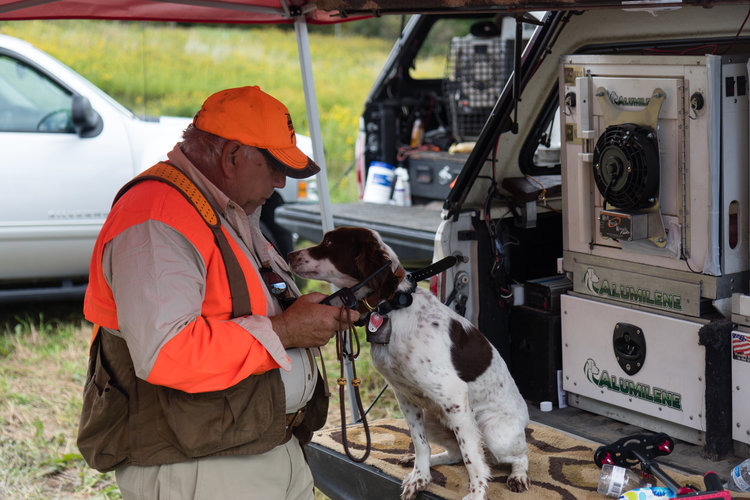
Last summer, he helped raise $34,000 for the canine cancer research fund at Cornell University’s College of Veterinary Medicine (CVM). This year he’s on-track to raise at least $50,000 at a Clays for K9 Cancer benefit shoot, scheduled for July 31 and hosted by the Hudson Valley and Rock Tavern chapters of the North American Versatile Hunting Dog Association (NAVHDA).
“When I did all this research and I found out what is available for a dog with cancer, and then I researched what’s available for a human who had the same cancer, and the differences are astronomical,” Fiumarello said. “We want to raise the most money we can for canine cancer research.”
But when Meg was first diagnosed in fall 2018, Fiumarello spent all his energy on finding the leading professionals to consult on her treatment plan. After he found a lump on her belly, a biopsy confirmed that the mass was a malignant mammary tumor, and both his long-time veterinarian in Poughkeepsie, New York and a reproductive specialist recommended that the tumor be removed. Given its clean margins, Meg’s prognosis looked good.
Her primary care veterinarian followed up with X-rays every three to four months, but in September 2020, the scans revealed a new mass — this time, in her right lower lung lobe.
“When we found this new mass, it was pretty traumatic for me,” Fiumarello said, “because once I started to do the research, I thought I knew what the prognosis was.”
That trail of information led him directly to Dr. Lindsay Thalheim, a staff oncologist at Cornell University Veterinary Specialists (CUVS), a subsidiary of CVM located in Stamford, Connecticut, offering veterinary specialty and emergency care.
“He wanted to get the best care and wanted to be seen by Cornell,” Thalheim said. “And I always appreciate those clients that are very proactive for their pets because it means that they care so much.”
At CUVS, Meg had additional diagnostic testing to determine the extent of her cancer and its exact type. Fortunately, the lung tumor was isolated, and so her care team determined that surgery was the best option. Dr. Adrienne Bentley, a staff surgeon at CUVS, performed the operation that removed the lung lobe containing the tumor. Diagnostic tissue testing confirmed that Meg had another malignancy, specifically a grade two pulmonary carcinoma. This malignancy is a type of primary lung cancer, which is relatively uncommon in dogs.
“We spoke before and after the surgery, walking through the process, and I felt that Meg was going to be alright,” Fiumarello said. “Approximately five weeks after that surgery, she was back in the field.”
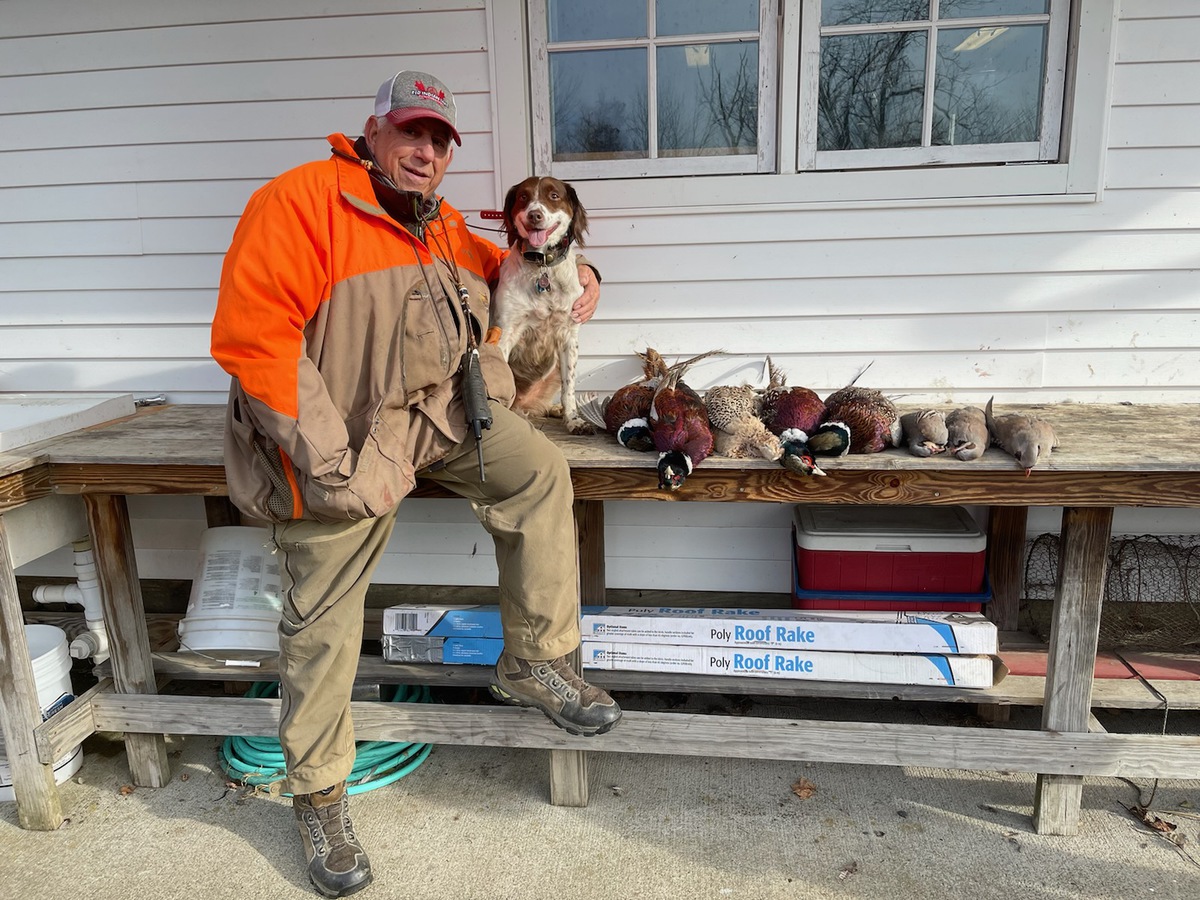
But he wanted to make sure that Meg’s cancer didn’t return. He asked Thalheim about other treatment options, including chemotherapy. In this particular situation — removing an isolated, intermediate-grade lung carcinoma — she said that existing studies were equivocal, meaning that they didn’t show a clear benefit for using chemotherapy after surgery to prolong survival.
“Lung cancer is not one of the most well-studied cancers in dogs because it’s not as common as some other cancer types,” she said. “But if we can catch it when it’s small, not metastatic or not causing clinical symptoms, then we know that the patient has a better chance at long-term survival.” Meg fell into this category of patients, and they made the decision to forego chemotherapy and monitor her health over time.
To advance current cancer research, scientists are investigating the genetic mutations in tumors’ tissues and cells to understand the unique factors driving their growth. These insights will allow experts to pinpoint the source and spread of different types of cancer, and ultimately, increasingly cater the type of care that patients receive — both in animals and in people.
Finding better ways to combat canine cancer is one of the top priorities for the Cornell Richard P. Riney Canine Health Center, which unites canine research, outreach and engagement across the college to help dogs live longer, healthier, happier lives.
“The more we learn about cancer, the better off our patients will be,” Thalheim said. “So when we have a client who wants to give back to that initiative, it’s amazing. It feels great to have somebody that is as interested in helping advance this field as we are.”
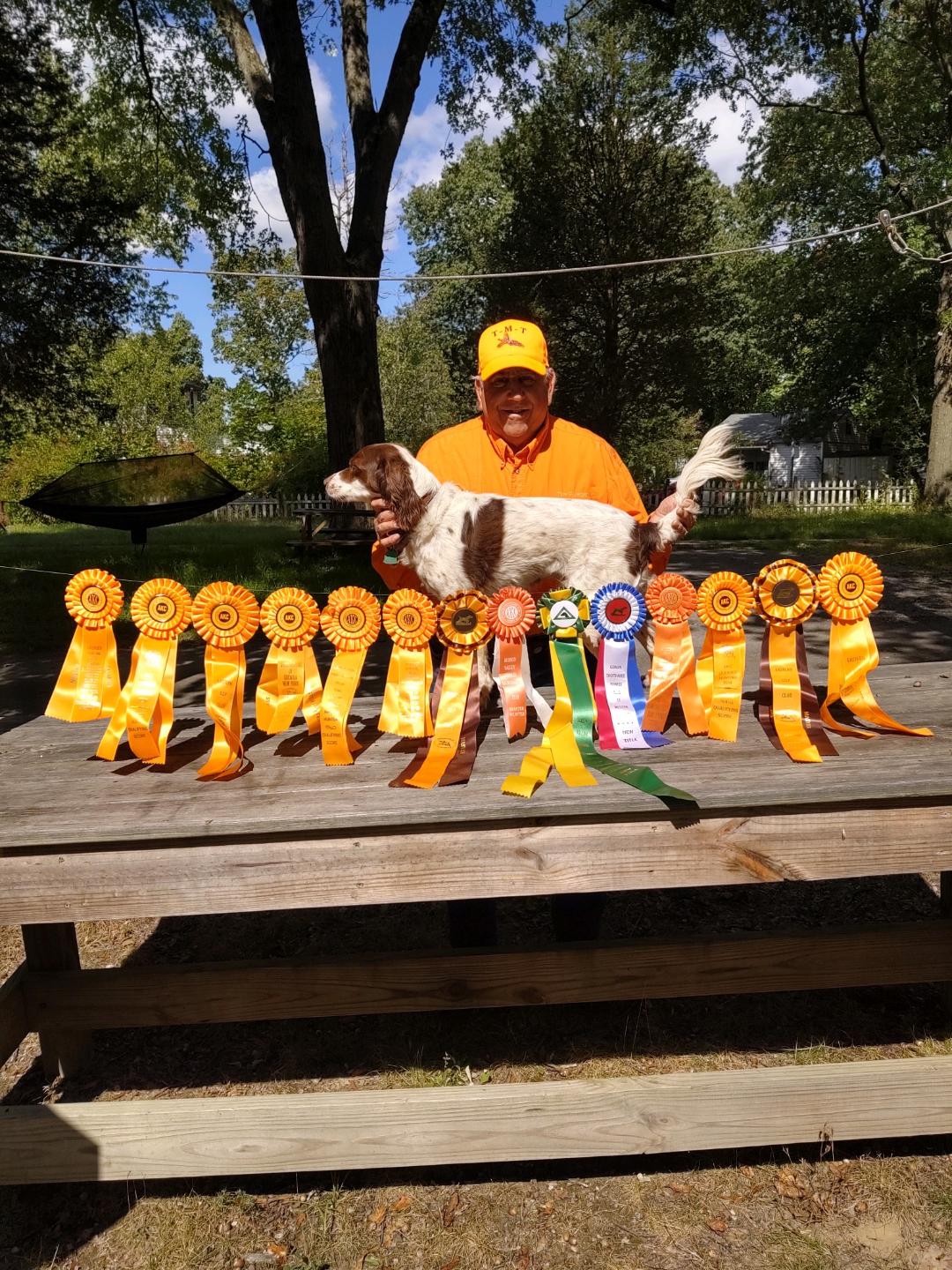
At the end of April, after finishing second in an upland bird competition in Delaware, Meg suddenly became lethargic, uncoordinated and bloated — prompting Fiumarello to call Thalheim again and take Meg back to the emergency room at CUVS. Her bloodwork showed a very low blood sugar level, and an abdominal ultrasound (sonogram) unfortunately revealed a tumor on her kidney about the size of a grapefruit. A CT (or “CAT”) scan revealed that the tumor could be excised, although another small abnormal area was documented on her other kidney, and they were concerned about that tumor’s potential to spread.
Thalheim and Bentley recommended surgical removal of the mass, and the large tumor was taken out along with the affected kidney. Meg recovered from the surgery, and she started chemotherapy to slow the cancerous growth in her remaining kidney. She was diagnosed with a third type of cancer called nephroblastoma, which generally develops in young children, but is extremely rare in dogs.
“It was touch and go for a couple of days,” Fiumarello said. “But you cannot get better care than the world-class expertise at Cornell — from the front desk to the operating room, everyone’s care and concern went far above and beyond what I’ve received anywhere else. We felt like family. And when Meg came home again after another surgery, I just wanted to hug her until all her stitches broke.”
This recent scare has redoubled his motivation to make sure that the upcoming Clays for K9 Cancer fundraiser is a success. Cornell has saved Meg’s life again, he said.
“A lot of the research that’s being done with dogs directly helps humans too. It goes both ways,” he said. “We all know somebody, a friend or a dog or whoever, that’s dealt with cancer. So sign up to support a common cause and you may be helping somebody down the road, whether they’ve got two legs or four.”
The Clays for K9 Cancer benefit shoot will take place on July 31 at Mid-Hudson Sporting Clays, in New Paltz, New York. Registration details and sponsorship information are available online at the Hudson Valley NAVHDA website. You may also reach Tom directly at tseaswirl1@aol.com or 845-625-3151 for more information.
Written by Jana Wiegand



